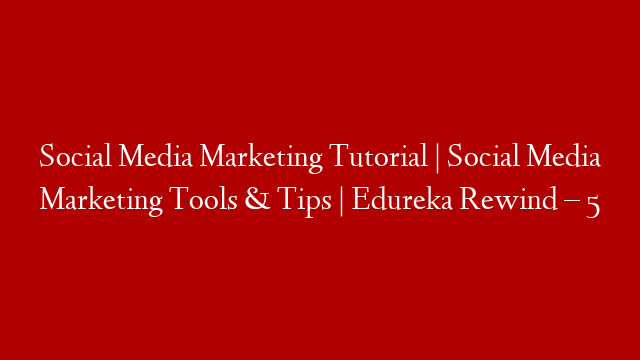The business of content marketing is fundamentally based on the premise of “content being king” and rightly so, but with multiple social media platforms to market on, you will need to keep publishing content on a regular basis. This could be blog posts, podcasts, e-books, videos or more to ensure that you generate enough eyeballs. But more content may not be better or necessarily effective if a full-fledged content marketing strategy is not in place. The volume of content is just one of the many things you need to consider when thinking of
Nick Westergaard shares with us how he shapes his content strategy by referring and relating to Rudyard Kipling’s 1902 poem “The Elephant’s Child”.
I keep six honest serving-men (They taught me all I knew);
Their names are What and Why and When and How and Where and Who.
Questions-What, Why, When, How, Where and Who
We can also use these six men to come up with our content marketing strategies. The five W’s (and the one H) can do much, especially in simplifying your content creation process. It is important to focus on WHY, WHO and WHAT to set the foundation for content that is both business centric and appeals to your target base.
WHY – “Start with Why” is Simon Sinek’s now famous Mantra that makes so much sense in today’s Why is your business objective – Why do it?
Content Marketing can help you achieve specific business objectives and your WHY should be answered by one of them in each of your real world scenarios.
Branding: Are you looking at establishing familiarity of your brand or creating/re-creating your brand image within your industry or market segment?
Community Building: Is your goal to build a community around your product or service that allows for a free flow of information and feedback?
Public Relations: Do you seek to tailor your content for promotions and PR events?
Market Research: Are you looking to gauge market feedback on any particular topic, analyze the data and use to your advantage?
Customer Service: Do you wish to offer service related content to engage and connect with your existing customer base?
Lead Generation: Do you want to create inquiry based traffic and generate leads for newer sales?
Which then brings us to Who (m) or WHO, that refers to the audience that you are targeting or already serving. Your content has to offer some kind of a solution – it has to serve a need in the lives of your customers. This would mean that you’ve got to figure out your customers’ preferences and find out what is actually important to them. This can be achieved by reviewing quantitative demographics and qualitative psychographics.
Finally based on your business objective (the why) and figuring out your target audience (who), you are in a better situation to decide WHAT form of content do you need in that scenario. It’s all about creating content that fits a simple strategy – what’s best for your brand?
Kipling’s first three serving men, the Why, Who, and What provides a simplified foundation for a strategic framework you can use to arrive at the right content serving the needs of both your audience and your business. We can now delve into the details with the rest of the serving men – WHEN (period and frequency) – WHERE (internally or externally, which platform) and finally HOW (plan of action, how will you measure the success)
It would help to have an innovative mindset in place to ensure that your content not only grabs attention but also holds it. It’s not just about piquing curiosity, but also about engaging your customer towards an action or a reaction that you would like. Of course, you will have a variety of metrics to evaluate your publications – page views, video views, length of view time, social media shares etc. but do remember to optimize for your mission rather than for the metrics.
B2B content marketing mistakes
Now that we’ve looked at the essentials, let’s look at some common B2B content marketing Mistakes so that we may steer away from them. According to the research that involved over 5000 B2B purchase participants across 12 industries, the three mistakes that undermine a firm’s content marketing strategy are…
Too much of “thought leadership” in the content.
Most marketers use their content strategy in B2B marketing scenarios to demonstrate their levels of expertise and “thought leadership” in their industry. While they may believe they are being perceived as “experts”, a CEB research shows that simply representing a “smart perspective” has no significant impact on the decision making of the customers. Rather it is good content that enlightens the customers about new developments in their industry and opens new ways of looking at their businesses. It should give them a compelling reason to consider a change and take an urgent action.
Too much “personalization” of content
While there is a school of thought that personalization of content to suit each stakeholder of your purchase group is the way ahead, this strategy has been shown to backfire, especially with multiple stakeholders having a say in the purchase decision. In fact, trying to personalize content for each member usually impacts the likelihood of a higher quality sale -and this is because diverse stakeholders have different priorities and look at solutions from their perspective. This leads to them opting for a “lower price” solution than what would be ideal for their business. So an effective content strategy should focus on a broader vision and offer a more collective solution that point in your direction.
Content that doesn’t allow you to gauge purchase process.
Marketers use content towards engaging customers and encouraging a purchase from them. However, very often, when they see some engagement with their content, they assume that there is an interest and consider such interaction as a step in the right direction – “the purchase progress path” and as a result, pass on the opportunity to the sales team but to no avail. Instead, it will be better to design content that can plot the levels and timing of engagement on the purchase path. This can be done by including questions that are most likely to be asked by customers along each step and then create marketing content that answers each question along the way.
These above mistakes are quite common and it is the time we take heed and break away from standardized content that seems to focus on “thought leadership”, “personalization” and “consumption metrics” but may not give you the results you seek.
So looking back at what we discovered, the ideal content marketing strategy would enlist the help of Kipling’s six serving men to set up a simple yet smart foundation for developing your content, and then consciously steer away from some common mistakes made by content marketers today.
Content marketing in today’s world is not only about creating a mechanized funnel to drive business in, but also creating opportunities to add knowledgeable insights while encouraging and urging your customers to walk down your revenue path with an eventual purchase or sale.



